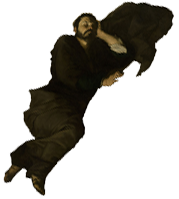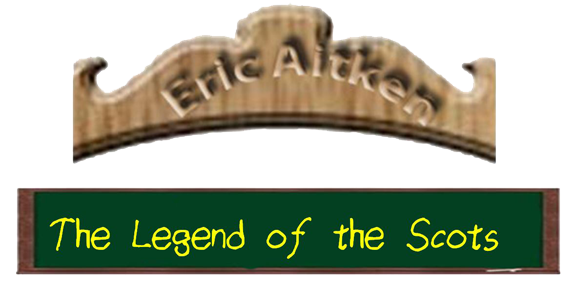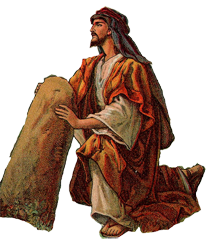





Most folks are familiar with Braveheart because of the movie. What a lot of people don't realize is how unique he was. He lived back at the time of the Feudal System. Countries were ruled by the king who ruled over the entire country, and under him were the nobles who each ruled his own part of the land. Everyone else was under the nobles. They were just ordinary commoners.
William Wallace, Braveheart, was a commoner, yet he ended up ruling Scotland when the nobles shrunk back from confronting King Edward I of England.
This situation, probably unprecedented for the age, came about because of a tragedy that occurred some years earlier. The reign of King Alexander III, is remembered as a golden age for Scotland. He was a vigorous and energetic king. The land was at peace, and prosperous. His queen, Margaret of England, who had born three children had passed away, and he had married 22-year-old Yolande de Dreux of France.
The Death of Alexander
On March 19, 1286, Alexander attended a meeting of his government in Edinburgh, Scotland's capital. It was a stormy and blustery day. After the meeting was over, he was anxious to return to his young queen, but this was not an easy thing to do. Edinburgh lies on the south side of the Forth River estuary. His queen was at the royal residence in Kinghorn, on the north bank of the Forth. To get to her he would have to ride west from Edinburgh the eleven miles to Queensferry, cross the stormy Forth River which was more than a mile wide, then ride east more than twelve miles to Kinghorn.
Though he was repeatedly warned against it, Alexander made it to Queensferry, and across the mile-and-quarter wide turbulent river. As he and his party headed east, legend has it that as night fell he was confronted by a grey-haired old woman, who cried out a warning to him not to go on. But this seemed foolish to Alexander. By far the worst part of his journey was over. All that remained before he got to his young queen was a relatively easy ride to Kinghorn.
It had been dark for several hours, as he fought his way through the storm, but now he had arrived near the edge of the village of Kinghorn. No one now knows how it happened, but in the dark Alexander became separated from his party, and his horse fell over a cliff and Alexander plunged to his death beside the raging waters of the Forth River estuary.
Scotland mourned its lost monarch. The poet, Andrew of Wyntoun, spoke of the grief and troubles that followed the death of the king is these words:
Quhen Alysandyr oure kyng was dede,
That Scotland led in luve and le,
Away was sons of ale and brede,
Of wyne and wax of gamyn and gle.
Oure gold was changed into lede,
Cryst, born into vyrgynyte,
Succoure Scotland and remede,
That stat is in perplexyte.
You probably don't know the Scot's tongue, but you still get the drift. The once prosperous land was plunged into want. In their eyes their gold had turned to lead. The poet calls on Christ for succor. Things were bad. All three of Alexander's children died in the five years prior to the king's own death. The only heir to the throne who still lived was the king's three-year-old granddaughter, Margaret, Maid of Norway. Her mother, Alexander's daughter, was the Queen of Norway.
Margaret, Maid of Norway, never saw the mainland of Scotland. While she was being escorted there she died at Orkney. She was seven years old. Scotland was plunged into a situation where there were thirteen claimants to the throne. King Edward of England seized the opportunity and tried to take over Scotland, and this is what lead to William Wallace—to Braveheart.
From Adam to Abraham to Alexander III
When Alexander was crowned king, at the abbey of Scone, on the thirteenth day of July 1249, the young king, he was only seven years old, heard recited his ancestry going all the way back to Adam. This genealogy was long believed, and who am I to question it, although I certainly entertain some doubts.
What was recited was the legendary history of the Scots.
In 1320, the nobles of Scotland prepared a remarkable document. The Declaration of Arbroath is called by some, the Scottish Declaration of Independence. Back when the countries of Europe were under the Feudal System the nobles and the king of Scotland broke with the Feudal System. The Declaration, with the approval of the king, made the nation supreme. The nation was not subject to the king in the way of the nations of Europe, but the king was subject to the nation.
They declared their loyalty and support of King Robert the Bruce in these words:
But from these countless evils we have been set free, by the help of Him who though He afflicts yet heals and restores, by our most tireless prince, King and lord, the lord Robert. He, that his people and his heritage might be delivered out of the hands of our enemies, bore cheerfully toil and fatigue, hunger and peril, like another Maccabaeus or Joshua. Him, too, divine providence, the succession to his right according to our laws and customs which we shall maintain to the death, and the due consent and assent of us all have made our prince and king. To him, as to the man by whom salvation has been wrought unto our people, we are bound both by his right and by his merits that our freedom may be still maintained, and by him, come what may, we mean to stand.
Notice that Robert was made king by their consent. And notice the king's rulership was subject to the nation as they continued:
Yet if he should give up what he has begun, seeking to make us or our kingdom subject to the King of England or the English, we should exert ourselves at once to drive him out as our enemy and a subverter of his own right and ours, and make some other man who was well able to defend us our King; for, as long as a hundred of us remain alive, never will we on any conditions be subjected to the lordship of the English. It is in truth not for glory, nor riches, nor honours that we are fighting, but for freedom alone, which no honest man gives up but with life itself.
—Declaration of Arbroath A.D. 1320
The Scots are justifiably proud that in the darkness of the Feudal times, the light shone forth in their little country. But another interesting thing was that the Declaration recited the legendary history of the Scots, when it said to Pope John XXII:
Most Holy Father, we know and from the chronicles and books of the ancients we find that among other famous nations our own, the Scots, has been graced with widespread renown. It journeyed from Greater Scythia by way of the Tyrrhenian Sea and the Pillars of Hercules, and dwelt for a long course of time in Spain among the most savage peoples, but nowhere could it be subdued by any people, however barbarous. Thence it came, twelve hundred years after the people of Israel crossed the Red Sea, to its home in the west where it still lives today. The Britons it first drove out, the Picts it utterly destroyed, and, even though very often assailed by the Norwegians, the Danes and the English, it took possession of that home with many victories and untold efforts; and, as the histories of old time bear witness, they have held
it free of all servitude ever since. In their kingdom there have reigned one hundred and thirteen kings of their own royal stock, the line unbroken by a single foreigner.
Greater Scythia is north of Persia and Assyria, so what they are claiming is that the Scots originated in that area. Take the vowels out of Scythia and Scot and you have Scth and Sct, and th and t are related. Supporters of the history like to point out the relationship of the two names.
Let me emphasize that I DO NOT BELIEVE THIS LEGENDARY HISTORY just as modern historians do not believe it, BUT I cannot say it is not true. In fact, every time that I know of that some historical fact has been brought to light by archaeologists and others, they do not disagree with the legend. Archaeologists have dug up ancient fabrics that are woven like tartan plaid.
But here's the thing. Note that the legendary histories identify the place of origin as just north of Assyria. Some scholars point out that it is the same location where the nation of Israel was carried to their exile around 750 B.C.E. They also point out that the Old Testament book of Amos calls the nation of Israel by the name of Isaac at Amos 7:16. They see a similarity between the two names. Convinced? Well, I'm not. For instance, 2000 years ago there was a Roman scholar called Seneca, and when the colonists came to North America they found a group of native peoples called Seneca. The colonists did not find the Seneca peoples wearing Roman togas, although I must admit that Seneca Chief Cornplanter, painted in 1796, looked a wee bit like a Roman. But an artist can make anyone look like something he isn't, so that doesn't count.
There is a great deal more to the legends, but this is why I thought it an interesting subject for the musical stage.
This is a link to may opera page.
Email: contact@ericaitken.com
© Copyright 2015 Eric Aitken All rights reserved.